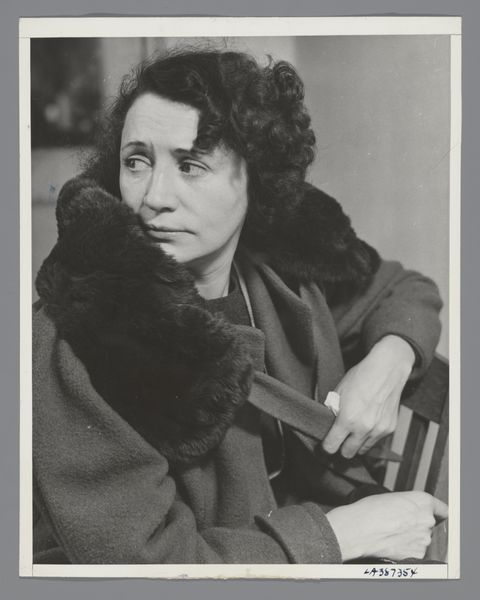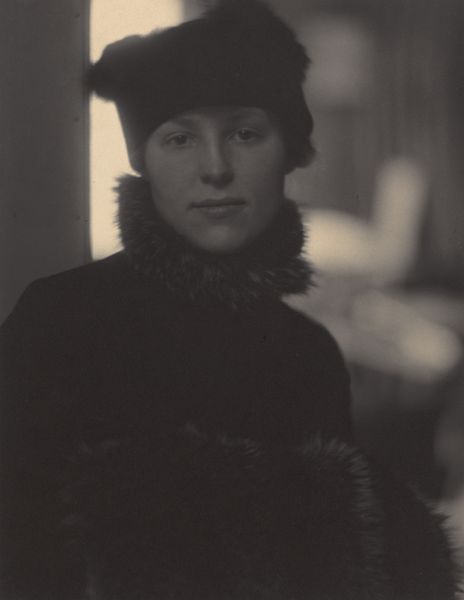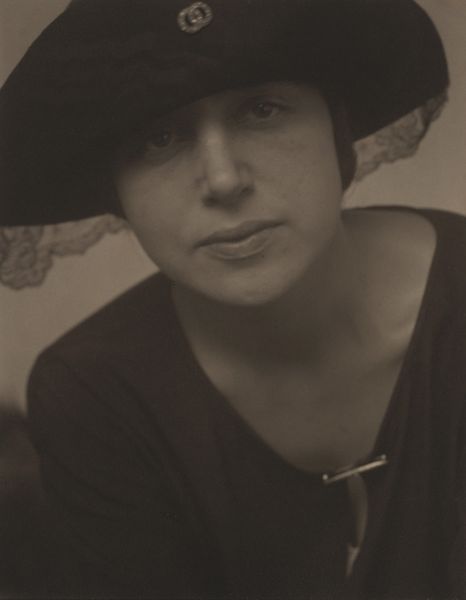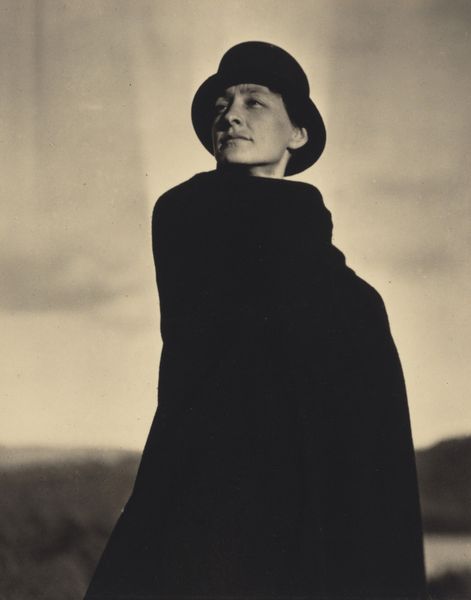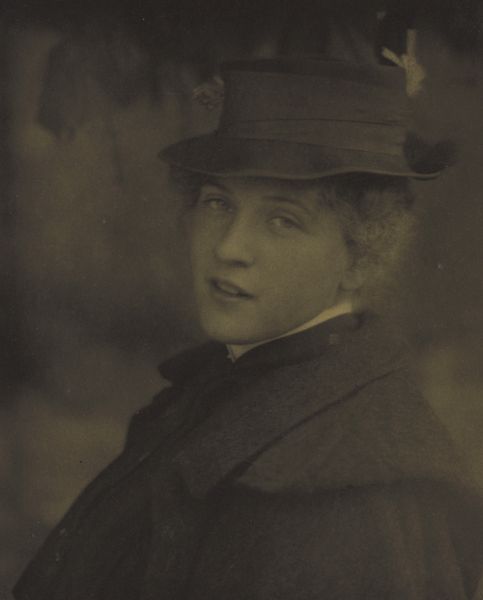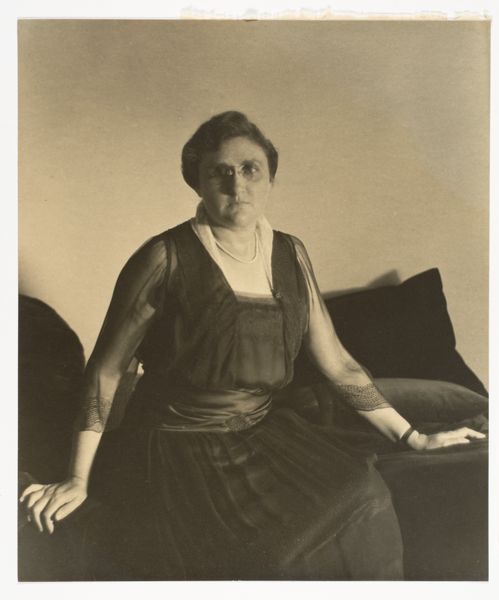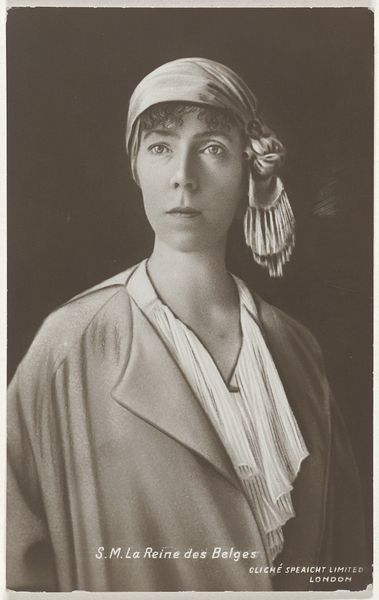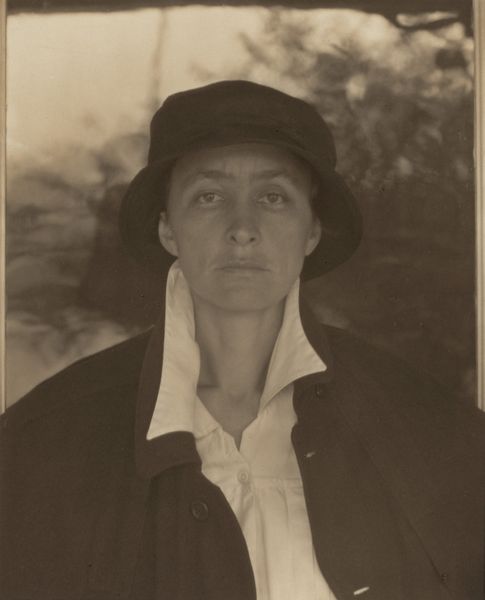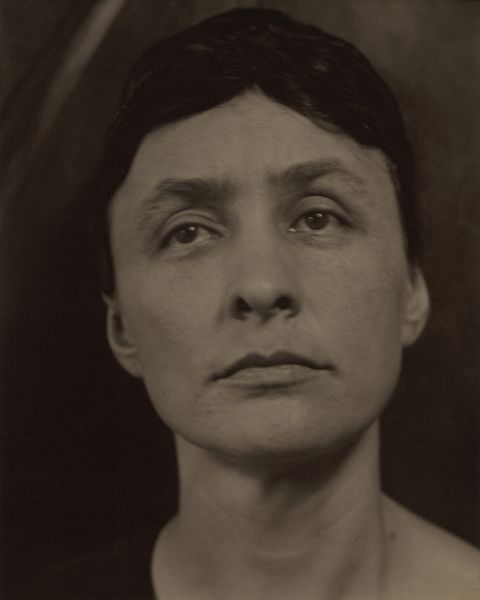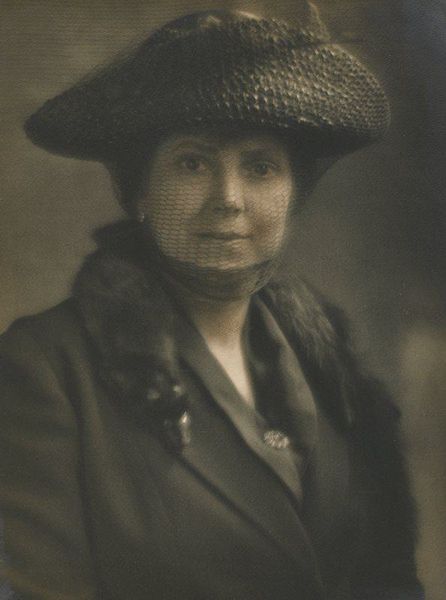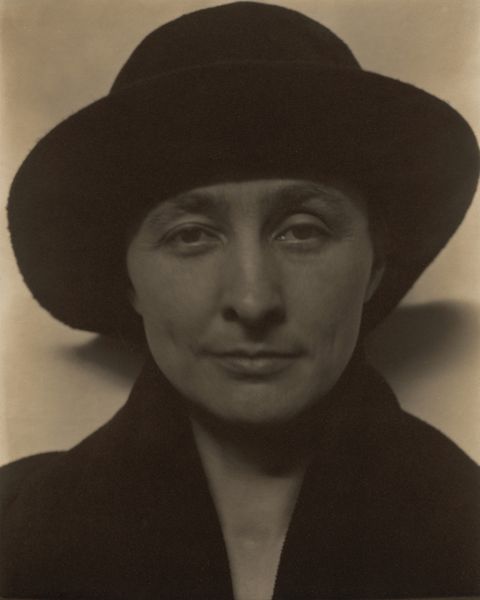
photography
#
portrait
#
pictorialism
#
portrait
#
photography
#
modernism
#
realism
Dimensions: image: 24.2 × 19.2 cm (9 1/2 × 7 9/16 in.) sheet: 25.2 × 20.2 cm (9 15/16 × 7 15/16 in.) mount: 56.5 × 45.6 cm (22 1/4 × 17 15/16 in.)
Copyright: National Gallery of Art: CC0 1.0
Alfred Stieglitz created this portrait of Selma Schubart using a platinum print, a process prized for its soft tonal range and matte surface. Unlike the sharp, glossy surfaces we often associate with photography today, the platinum print offered a hand-crafted aesthetic, aligning photography with the fine arts. Stieglitz, a champion of photography as an art form, skillfully manipulated the printing process to achieve a particular mood and effect. Each print required careful control of exposure and development, reflecting the hand of the artist as much as the eye of the photographer. Consider the social context: platinum was an expensive material, and this process was labor-intensive. Stieglitz, therefore, wasn't just making a portrait; he was making a statement about the value of artistic labor and the elevation of photography to the realm of high art. This piece invites us to think about the choices artists make in their processes, and how these choices imbue an image with cultural meaning.
Comments
No comments
Be the first to comment and join the conversation on the ultimate creative platform.

